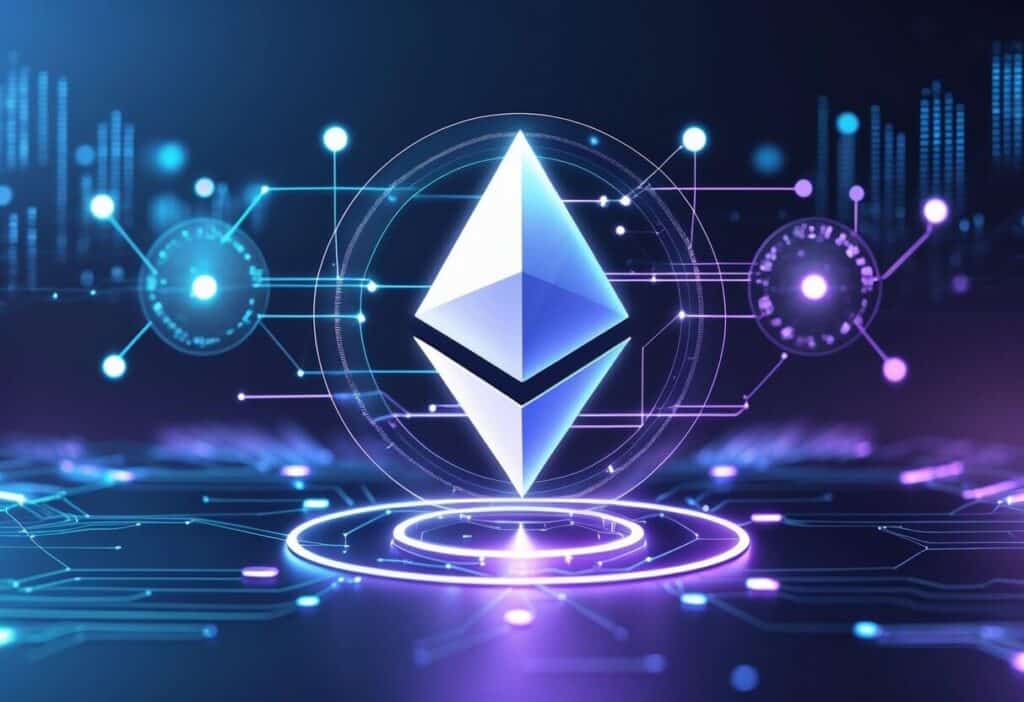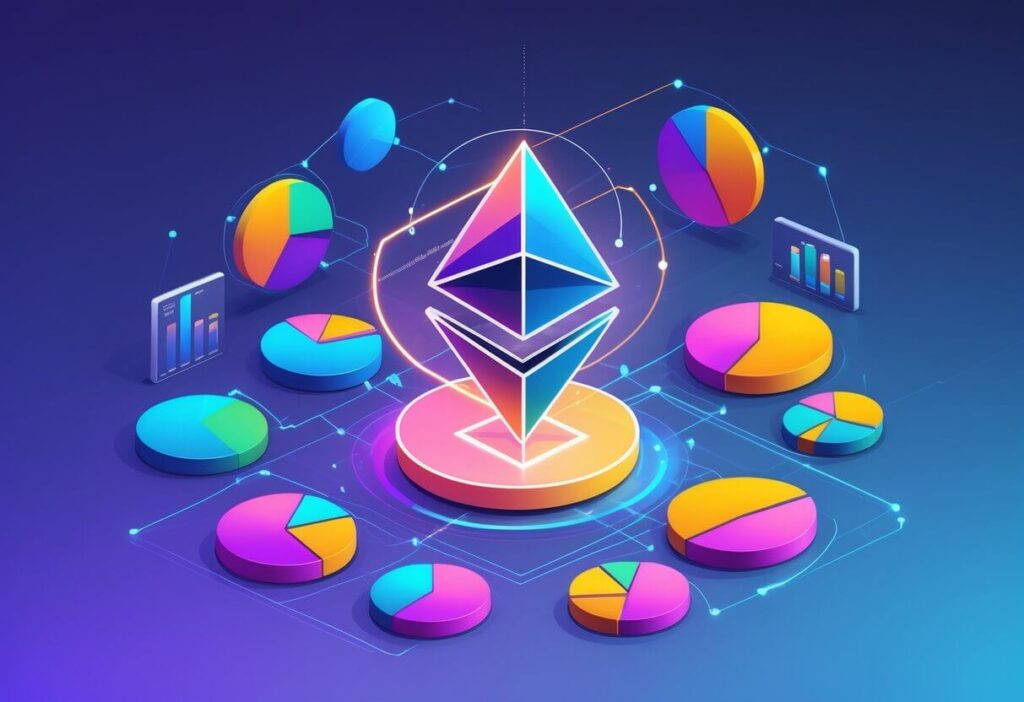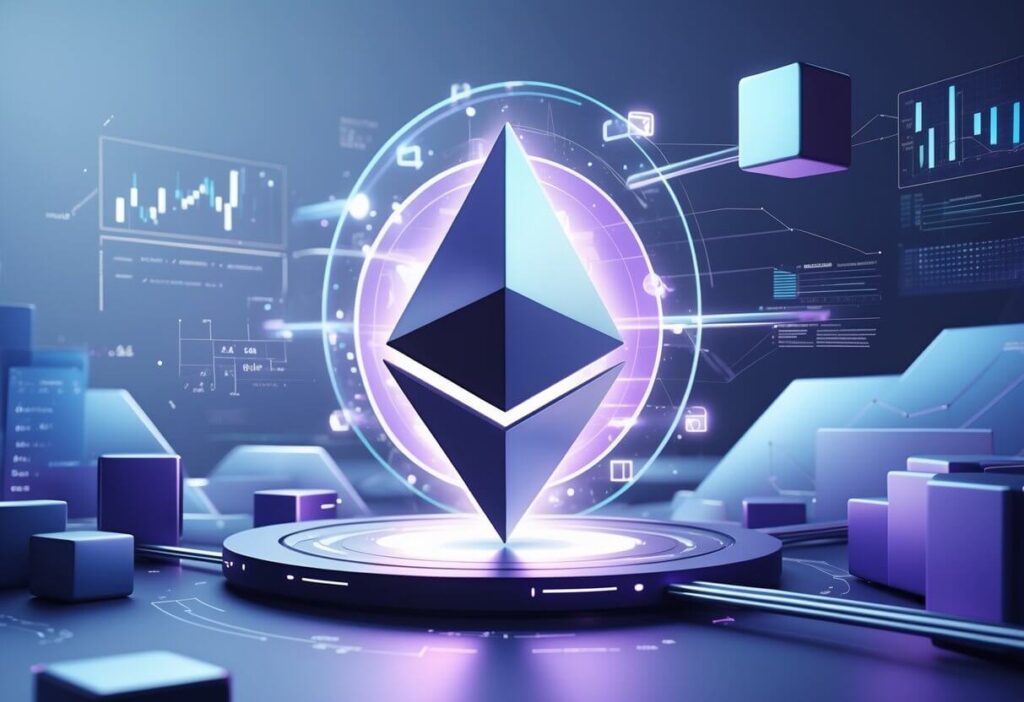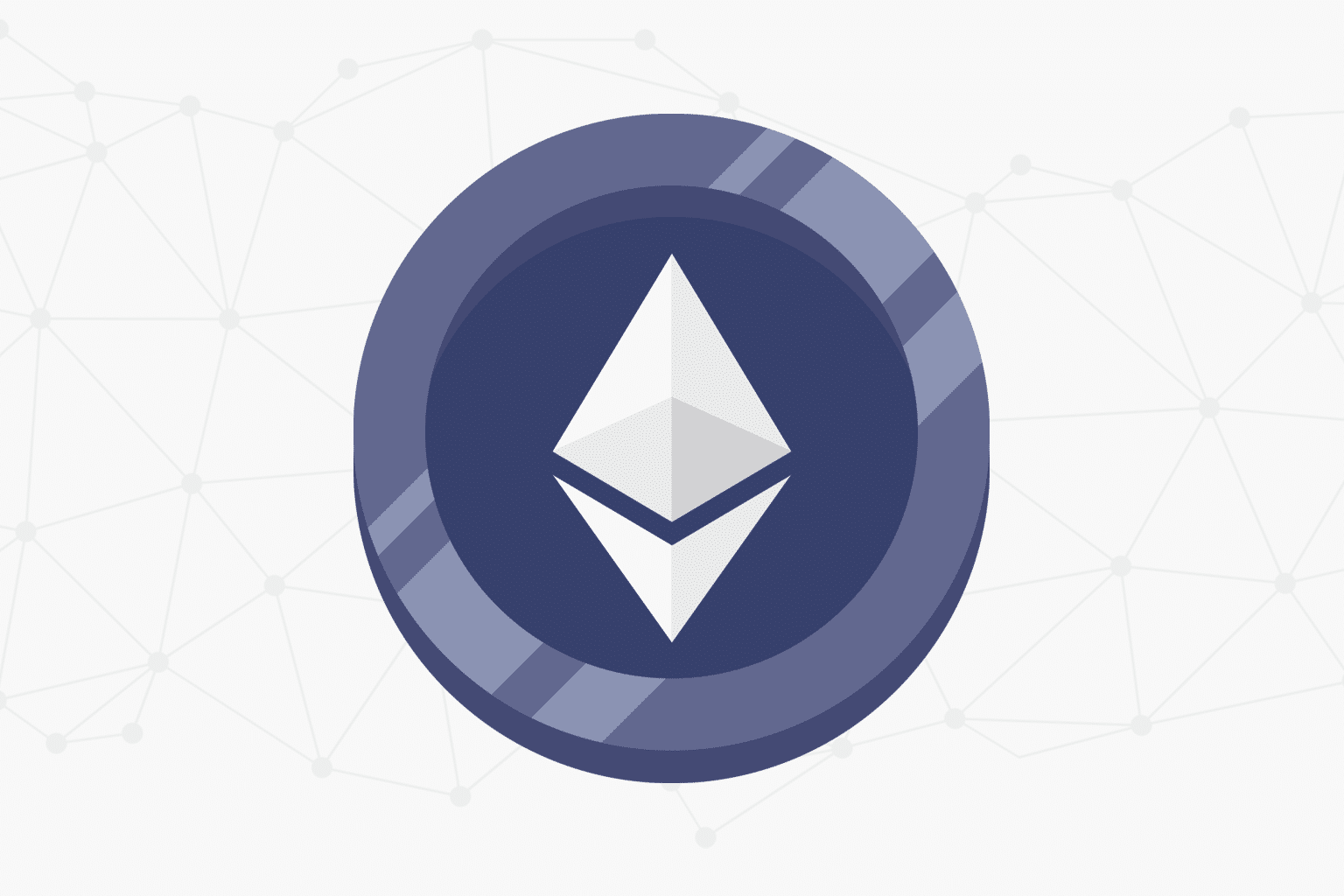Ethereum has become one of the most talked-about names in cryptocurrency, but many people still wonder what it actually is and why it matters. Ethereum is a decentralized blockchain platform that enables developers to build and run applications using smart contracts, while ETH is its native cryptocurrency that powers the entire network. Unlike Bitcoin (BTC), which primarily serves as digital money, Ethereum functions as a programmable platform where you can create everything from decentralized finance apps to NFT marketplaces.

What makes Ethereum special is its ability to run smart contracts – automated agreements that execute themselves when certain conditions are met. This technology has sparked the creation of thousands of other tokens and projects, including popular ones like Chainlink (LINK) and Uniswap (UNI), all built on top of the Ethereum network. The platform has grown from a simple idea in 2015 to become the second-largest cryptocurrency by market value.
I’ll walk you through everything you need to know about Ethereum, from its fascinating history and how it actually works to the different ways people use it today. Whether you’re curious about investing or just want to understand this technology that’s reshaping finance, this guide will give you a clear picture of what Ethereum is all about.
Key Takeaways
- Ethereum is a blockchain platform that runs smart contracts and decentralized applications, with ETH as its native cryptocurrency
- The platform evolved from a simple blockchain concept in 2015 to become the foundation for thousands of tokens and DeFi applications
- ETH serves multiple purposes including paying transaction fees, securing the network through staking, and acting as collateral in financial applications
Overview of Ethereum (ETH)
Ethereum is a decentralized blockchain platform that goes far beyond simple money transfers. I can think of it as a global computer that runs apps and handles digital money at the same time.
The Ethereum network uses its own cryptocurrency called ether or ETH. This ether coin serves two main jobs on the platform.
First, ETH acts as digital money that I can send to other people. Second, it pays for fees when I use apps on the Ethereum blockchain.
The blockchain technology behind Ethereum keeps all transactions safe through cryptography. This means my crypto stays secure without needing banks or other companies to control it.
What makes Ethereum special is the Ethereum Virtual Machine or EVM. This system lets developers build smart contracts and apps directly on the decentralized blockchain.
Developers write these apps using a coding language called Solidity. These programs run exactly as written and cannot be changed or stopped by any single person or company.
| Key Features | Description |
|---|---|
| Digital Currency | Send and receive ETH payments |
| Smart Contracts | Self-running programs on blockchain |
| Decentralized Apps | Apps that no single company controls |
| Global Access | Available anywhere with internet |
The Ethereum blockchain processes thousands of transactions every day. ETH fuels and secures Ethereum by paying validators who keep the network running safely.
History & Evolution
Ethereum was conceived in 2013 by programmer Vitalik Buterin. He proposed a blockchain platform that could support decentralized applications beyond just digital currency.
The project gained momentum quickly. In 2014, Ethereum was announced at the North American Bitcoin Conference. A crowdsale raised over $18 million to fund development.
Frontier launched in 2015 as Ethereum’s first live release. This initial version allowed developers to build and deploy smart contracts for the first time.
I’ve watched Ethereum evolve through many upgrades. The Homestead fork in 2016 improved protocol stability. The Byzantium and Constantinople upgrades reduced mining rewards and added new features.
The London upgrade in 2021 introduced EIP-1559. This reformed the transaction fee market and made gas fees more predictable.
The Merge represented Ethereum’s biggest change. In September 2022, Ethereum switched from proof-of-work to proof-of-stake. This transition connected the main network to the Beacon Chain.
The Beacon Chain had been running since 2020. It required 16,384 deposits of 32 staked ETH to launch securely. This formed the foundation of Ethereum 2.0.
Recent upgrades continue improving the network. The Shanghai-Capella upgrade enabled staking withdrawals. Dencun in 2024 reduced costs for layer 2 networks through data “blobs.”
The Ethereum Foundation has guided this evolution. Each upgrade brings the network closer to full scalability through sharding and other improvements.
Composition & Sector Weights

I need to explain how Ethereum’s ecosystem breaks down across different sectors and applications. The Ethereum network’s components form the foundation for various use cases.
DeFi dominates the largest portion of Ethereum’s total value locked (TVL). I see lending platforms like Aave and Compound making up about 25-30% of activity. Decentralized exchanges represent another 20-25% of the ecosystem.
NFT marketplaces account for roughly 15-20% of network usage. Gaming and collectibles drive most of this sector’s transaction volume.
Infrastructure services make up 10-15% of the ecosystem. This includes wallets like MetaMask and Ledger that help users store ETH securely.
| Sector | Weight | Key Applications |
|---|---|---|
| DeFi | 45-55% | Lending, DEXs, Stablecoins |
| NFTs | 15-20% | Art, Gaming, Collectibles |
| Infrastructure | 10-15% | Wallets, Oracles, Tools |
| Enterprise | 5-10% | Supply Chain, Identity |
| Other | 10-15% | DAOs, Social, Experimental |
Wallet distribution affects how I analyze the network. Over 250 million unique ethereum wallet addresses exist, though many users hold multiple wallets.
Hashing power shifted dramatically after The Merge in 2022. Validators now secure the network instead of miners, changing the economic structure.
Inflation dynamics turned deflationary during high network usage. When base fees burn more ETH than validators earn, supply decreases.
Calculation Methodology

I need to explain how Ethereum gas fees are calculated using the current methodology. The network uses a dual-fee system that replaced the old proof-of-work model.
Gas Fee Components
The total fee has two parts: base fee and priority fee. I calculate the total using this formula:
Total Fee = Gas Units × (Base Fee + Priority Fee)
Base Fee Calculation
The base fee adjusts automatically based on network demand. When blocks exceed the 15 million gas target, the base fee increases by up to 12.5% per block.
| Block Size | Fee Change | Result |
|---|---|---|
| Under target | Decreases | Lower fees |
| At target | No change | Stable fees |
| Over target | Increases | Higher fees |
EIP-1559 Impact
EIP-1559 changed how transaction costs work after Ethereum moved from proof-of-work to proof-of-stake. The base fee gets burned instead of going to miners.
Priority Fee Setup
I set a tip amount to incentivize validators to include my transaction. Higher tips mean faster processing during busy periods.
Gas Limit Considerations
Simple ETH transfers need 21,000 gas units. Smart contracts require more gas depending on their complexity. I must set appropriate limits to avoid failed transactions.
The proof-of-stake system makes fee calculation more predictable than the old proof-of-work model.
Significance & Common Uses
Ethereum stands as the foundation for most blockchain innovation I see today. Its decentralized blockchain platform enables developers to build applications without central control.
Smart Contracts & DApps
Smart contracts are self-executing programs that automatically handle agreements. These power thousands of decentralized applications (dApps) across gaming, finance, and social media.
DeFi Revolution
Decentralized finance (DeFi) lets people lend, borrow, and trade without banks. Popular platforms offer yield farming and decentralized exchanges (DEXs) for peer-to-peer trading.
Token Standards & Digital Assets
Ethereum created the ERC-20 token standard that most cryptocurrencies use today. This includes:
- Stablecoins – Digital money pegged to stable assets
- NFTs – Unique digital collectibles and art
- Utility tokens – Access tokens for specific platforms
Network Operations
ETH serves as digital money for transaction fees called gas. Validators stake ETH to secure the network and earn rewards through proof-of-stake consensus.
The platform hosts billions of dollars in value across thousands of projects. From enterprise solutions to NFT marketplaces, Ethereum powers the largest ecosystem of blockchain applications.
Network congestion can increase fees during high usage, but Layer 2 solutions help reduce costs while maintaining security.
How to Invest (No Advice)

I need to clarify that this information is educational only. I’m not providing investment advice or recommendations.
Getting Started
To buy ethereum, you’ll need a few basic things first. You need a cryptocurrency exchange account and a secure wallet to store your ETH.
Popular Exchange Options
Most people use centralized exchanges to purchase ETH. These platforms let you trade regular money for cryptocurrency.
Wallet Types
| Wallet Type | Description | Best For |
|---|---|---|
| Hardware | Physical device | Long-term storage |
| Software | Computer program | Regular use |
| Mobile | Phone app | Daily transactions |
| Web | Browser-based | Quick access |
Steps to Purchase
The basic process involves creating an exchange account first. You’ll need to verify your identity with documents.
Next, you add funds to your account using a bank transfer or debit card. Then you can place an order to buy ethereum at the current market price.
Storage Considerations
I recommend moving your ETH to a personal wallet after buying. Keeping coins on exchanges can be risky because exchanges can be hacked.
Important Notes
Cryptocurrency prices change constantly throughout the day. The amount of ETH you get depends on the current market price when you buy.
Remember that all cryptocurrency investments carry risk. Prices can go up or down quickly without warning.
Common Questions on Ethereum (ETH)
Ethereum doesn’t have a traditional index that requires regular reviews, ETH differs from Bitcoin primarily through smart contract functionality, and real-time ETH tracking is available through multiple cryptocurrency platforms.
How Often Is the Index Reviewed?
Ethereum doesn’t operate with a traditional financial index that requires periodic reviews. Unlike stock market indices that get updated quarterly or annually, Ethereum’s blockchain protocol undergoes continuous development through community proposals.
The Ethereum network updates happen through Ethereum Improvement Proposals (EIPs). These proposals can be submitted at any time by developers and community members.
Major network upgrades occur roughly every 12-18 months. The most significant recent update was the transition to proof-of-stake in September 2022.
Protocol changes require consensus from validators and the broader community. I can track these developments through the official Ethereum GitHub repository and community forums.
What’s the Difference Between ETH and Close Peer?
ETH vs Bitcoin represents the most common comparison in cryptocurrency. While Bitcoin focuses primarily on digital payments, Ethereum enables smart contracts and decentralized applications.
Bitcoin uses proof-of-work mining, while Ethereum now uses proof-of-stake validation. This makes ETH more energy-efficient than Bitcoin.
ETH is divisible up to 18 decimal places, allowing for micro-transactions. Bitcoin divides to 8 decimal places.
Ethereum processes transactions faster, typically in 12-15 seconds compared to Bitcoin’s 10-minute blocks. However, Bitcoin remains more established as a store of value.
The key difference lies in programmability – Ethereum supports complex applications while Bitcoin focuses on simple transfers.
Where Can I Track the Index Live?
I can monitor ETH prices and network data through several reliable platforms. CoinMarketCap and CoinGecko provide real-time price tracking with historical charts and market data.
Popular tracking platforms include:
- CoinMarketCap for comprehensive market data
- Etherscan for blockchain explorer functions
- DeFiPulse for Ethereum ecosystem metrics
- Trading platforms like Coinbase and Binance
Etherscan offers the most detailed network information, including transaction volumes, gas fees, and validator statistics. I can view individual wallet addresses and transaction histories here.
Most platforms provide mobile apps for convenient tracking. Price alerts help me monitor significant ETH movements throughout the day.
Professional traders often use TradingView for advanced charting tools and technical analysis indicators.
Frequently Asked Questions
People often ask about Ethereum’s differences from Bitcoin, its main uses like smart contracts and DeFi, and how ERC-20 tokens work on the network. Investment questions focus on price factors, risks and rewards, and converting ETH to cash.
Bitcoin works mainly as digital money for payments and storing value. I see it as a simple system focused on one job.
Ethereum does much more than just handle payments. Ethereum serves as a platform for deploying smart contracts, which are programs that run automatically when certain conditions are met.
Bitcoin has a hard limit of 21 million coins total. Ethereum doesn’t have a fixed supply limit, which means new ETH can keep being created.
Bitcoin aims to disrupt how we use money, while Ethereum seeks to change how applications work in a decentralized way. This makes them serve different purposes in the crypto world.
Smart contracts power most of Ethereum’s uses. These programs automatically execute agreements without needing a middleman to manage them.
DeFi refers to financial applications developed on blockchain networks without central authorities. Popular DeFi platforms include lending services, decentralized exchanges, and stablecoins.
Gaming and virtual worlds use Ethereum to secure ownership of digital items. Players can truly own their in-game assets and trade them freely.
Non-fungible tokens (NFTs) are tokenized versions of digital or real-world assets that prove authenticity and ownership. They’re used for digital art, collectibles, and certificates.
ERC-20 tokens are digital assets built on the Ethereum blockchain. They follow a standard set of rules that makes them work with all Ethereum wallets and applications.
These tokens use Ethereum’s network to operate but represent different projects or companies. Think of them like apps running on your phone’s operating system.
Most Ethereum wallets support ETH, all ERC-20 tokens, as well as other coins like Bitcoin and Litecoin. This makes managing different cryptocurrencies easier.
ERC-20 tokens pay transaction fees in ETH when they move around the network. This creates demand for ETH even when people are using other tokens.
Supply and demand drive Ethereum’s price like any other asset. When more people want to buy ETH than sell it, the price goes up.
Network activity affects ETH demand because you need ETH to pay gas fees, interact with smart contracts, and use decentralized apps. More usage means more demand for ETH.
Market sentiment and global economic conditions impact price too. Cryptocurrencies are considered high-risk assets that investors often avoid during uncertain times.
Competition from other blockchains can hurt demand. Faster and cheaper networks like Solana draw users away from Ethereum.
ETH prices can change dramatically in short periods. I’ve seen it drop over 50% in 2025 alone due to various market factors.
The network is decentralized with no single entity holding control, which provides security benefits. However, this also means no one can step in to fix problems quickly.
Ethereum powers many important applications in DeFi, gaming, and NFTs. This broad utility gives it value beyond just being a cryptocurrency.
Technical risks include smart contract bugs and network congestion. High gas fees during busy periods can make Ethereum expensive to use.
Regulatory changes could impact ETH’s value and usability. Government actions toward cryptocurrencies remain unpredictable in many countries.
Cryptocurrency exchanges offer the most common way to sell ETH for dollars. Popular platforms include Coinbase, Binance, and Kraken.
You’ll need to verify your identity on most exchanges before selling large amounts. This process usually takes a few days to complete.
Bank transfers typically take 1-3 business days to receive your money after selling. Wire transfers can be faster but cost more in fees.
Some platforms offer debit cards that let you spend your ETH directly. These convert your crypto to dollars automatically when you make purchases.
Peer-to-peer platforms connect you directly with buyers. This method can offer better prices but requires more caution about security.





